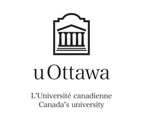Rapid increase in brain volume in the first year of a baby’s life, when compared to other infants, may help predict an early autism diagnosis. A small neuroimaging study was able to accurately predict the infants who were at a high risk of developing autism by 24 months. To arrive at these predictions, researchers measured the cortical surface areas and cortical thickness at 6 and 12 months of age, and analyzed the rate of growth using machine learning techniques. The brain differences correctly predicted the autism diagnosis in 80% of the cases among 106 high-risk infants. Authors note it’s yet unknown whether these differences in brain growth can also help predict other neurodevelopmental disorders. Further research is needed in order to develop these predictions into an early-detection clinical tool.
Authors:
Heather Cody Hazlett, Hongbin Gu, Brent C. Munsell, Sun Hyung Kim, Martin Styner, Jason J. Wolff, Jed T. Elison, Meghan R. Swanson, Hongtu Zhu, Kelly N. Botteron, D. Louis Collins, John N. Constantino, Stephen R. Dager, Annette M. Estes, Alan C. Evans, Vladimir S. Fonov, Guido Gerig, Penelope Kostopoulos, Robert C. McKinstry, Juhi Pandey, Sarah Paterson, John R. Pruett, Robert T. Schultz, Dennis W. Shaw, Lonnie Zwaigenbaum, Joseph Piven & The IBIS Network
Corresponding author:
Heather Hazlett, University of North Carolina, Chapel Hill, North Carolina, US, Email: hcody@med.unc.edu
Canadian co-authors:
Lonnie Zwaigenbaum, Department of Pediatrics, University of Alberta, Edmonton; Alan C. Evans, Montreal Neurological Institute, McGill University
Original paper published in Nature on February 15, 2017.
